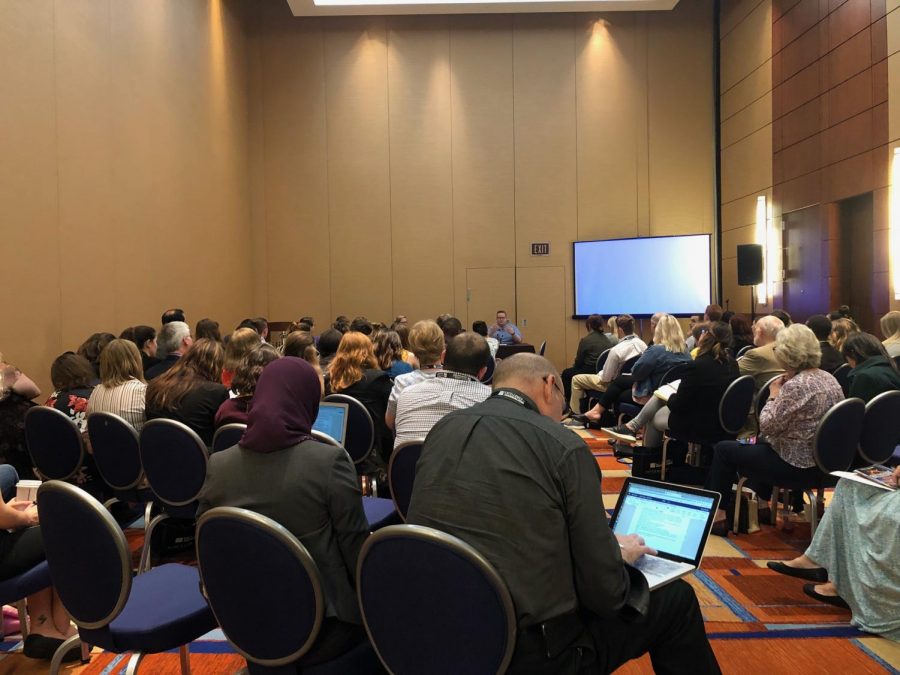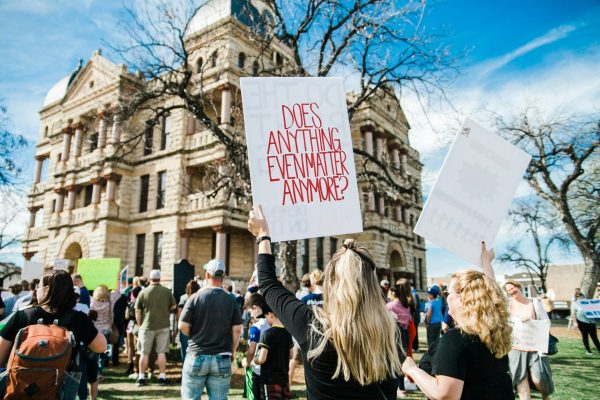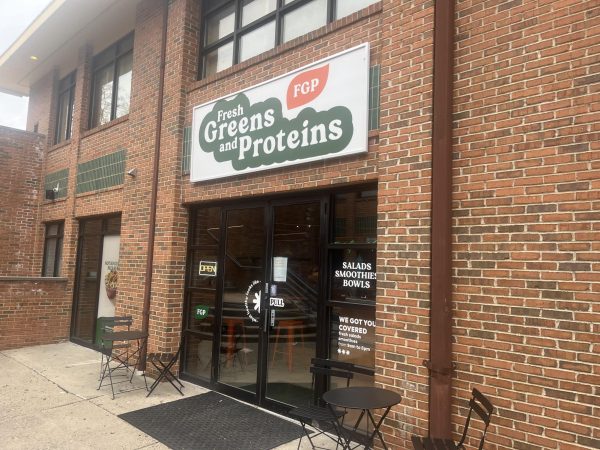How To Ethically Cover A Mass Shooting
Central Connecticut’s Society of Professional Journalists attended a conference on how to cover mass shootings in Baltimore last week.
October 6, 2018
A sea of hands shot up as the question, “Who has covered a mass shooting or some type of natural disaster?” was asked by Terence Shepard at this year’s Excellence in Journalism Conference in Baltimore, Maryland. Central Connecticut’s Society of Professional Journalists attended the conference.
Shepard, as well as three other panelists: Kristin Hussey, Andrew Seamen and Tim Scheld, watched the hands stand high tensely in the conference room.
The workshop on how to ethically cover a mass shooting had the eager and aspiring journalists ready with their laptops and fingers over the keyboard. It was a day for writers to come together and discuss a heavy topic.
Shepard, news director for WLRN in Miami, covered the Parkland mass shooting in Florida.
“Parkland seemed like a place of no crime,” Shepard said. Little did he know that this would come to an end.
Shepard discussed his experience of covering such a devastating topic, remembering a high school student he had interviewed after the deadly incident took place.
“I’m glad I got out of there, but I’m sad because I don’t know who was killed,” the student had told him.
Shepard shared that knowing what to say when reporting is also key.
“We call him the confessed shooter. We don’t ever call him the suspect,” Shepard said.
Covering mass shootings needs to go to further than just talking about what happened. Hussi, a freelance reporter for The New York Times, and the rest of the panelists were in agreement.
“How often do you need to name that person? How often do you need to go deep into people’s lives?” Hussi asked the room.
The room was silent. “Spend less time on the person who committed the crime and more time on the people involved,” Hussi stated.
Hussi, Seamen, who is a news editor for LinkedIn, and Scheld, a director of news and programming for WCBS in New York City, all spoke about their agreements.
Coming back later to cover the shooter is important because people in the community, as well as outside sources, need to know what is going on in the trial.
With that said, the panelists made it known that over-covering a mass shooting is bad media. The people need to know what is going on, but reporters should not overdo it.
The speakers suggested going to the shooter when needed but focus on the aftermath of the town as your priority. Ask yourself, ‘How are the residents coping with the shooting?’ ‘How has this impacted the community?’
Taking care of oneself as a journalist is crucial because covering these types of stories has an impact.
“We all have to be human beings. Going into the communities that are dealing with trauma, has to be done as a human being,” Seamen said.
Going into a dangerous zone to cover an important story such as mass shootings needs to be done carefully, too.
“Make sure your safety is there and the people around you [are] secure,” Scheld stated, emphasizing that a mass shooting story needs to be told, but it needs to be presented in the correct manner.
As the panelists finished speaking, they made it clear that, as journalists, it is one’s job to tell the story as respectfully as possible while keeping the facts straight.










